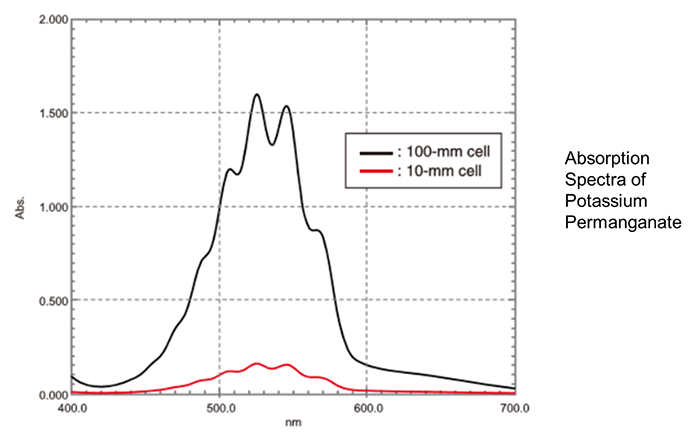What are “long path” cuvettes and why are they used? (sample too dilute)

Cells with an optical path length of 10 mm are used in many different types of solution analyses. If the sample concentration is low, however, it may not be possible to obtain enough absorbance with a cell of this size. Although concentrating such samples allows the use of 10-mm cells, concentration is difficult in cases where the sample vaporizes or undergoes a chemical change during the concentration process. In such cases, measurement using a "long-path cell" is effective. There are long-path cells with optical path lengths of 20 mm, 50 mm, and 100 mm. The absorbance increases in proportion to the optical path length of the cell. The figure here shows the results obtained by analyzing a 10-mg/L potassium permanganate solution with a 10-mm cell and a 100-mm cell. It can be seen that the absorbance of the 100-mm cell is ten times that of the 10-mm cell.
A well-known application of analysis using a long-path cell is the turbidity measurement of water. 50-mm and 100-mm cells are often used to analyze samples with a low turbidity.


